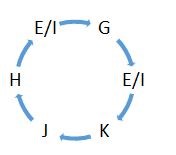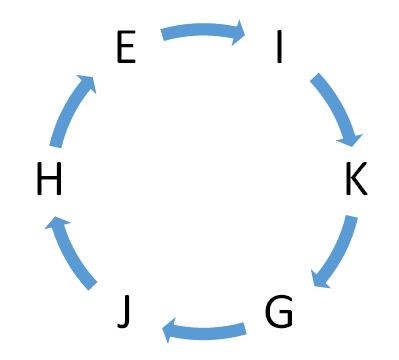Question
Among E, G, H, I, J and K, who is second to the left of
G if all are sitting around a circular table facing the centre. I. J sits third to left of G, who is not an immediate neighbour of K. H is second to the left of K. II. I sits opposite to J and is the immediate neighbour of K and E. H is sitting immediate right of E. Each of the questions below consists of a question and two statements numbered I and II are given below. You have to decide whether the data provided in the statements are sufficient to answer the question. Read both the statements and –Solution
From I,  K is sitting second to the left of G. From II,
K is sitting second to the left of G. From II,  H is sitting second to the left of G.
H is sitting second to the left of G.
Find the ratio of the number of Cello water bottles sold by shop D to the total number of Milton water bottles sold by shop A.
Number of wallets sold by A on Tuesday is what% of total number of wallet sold by the same store on all the days?
How many students obtained more than 130 marks?
If B obtained a profit of Rs.80 on each bag and A obtained a profit of Rs.25 on each watch, what will be the ratio of total profit of B on bags to the t...
The number of black pens sold by shopkeeper B is how much percent of that sold by shopkeeper D?
Find average number of employees in department B in all the given three years.
Out of the total number of tourists from USA, 42% are females. If out of the total number of female tourists from USA, 20% are going to Shillong. How ma...
What is the total number of all pizzas sold in the first two weeks?
In which year the pass percentage is the lowest?
If 45% of students who apply for Graduation in 2015 are girls and ratio of girls who applied for Graduation in 2015 to the girls who applied for post Gr...
Relevant for Exams:


